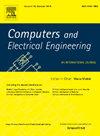Design of a low-power intelligent system for optimizing railway tunnel settlement data stream processing using TinyMLt
IF 4
3区 计算机科学
Q1 COMPUTER SCIENCE, HARDWARE & ARCHITECTURE
引用次数: 0
Abstract
The advancement of TinyML technologies has opened new avenues for designing low-power intelligent systems, significantly enhancing the processing capabilities of embedded devices in critical infrastructure. To overcome these limitations, we propose a Dynamic Geomechanical Prediction Framework (DGPF) integrated with a novel Adaptive Learning-Informed Simulation (ALIS) strategy. The DGPF combines physics-informed simulations with data-driven corrections, leveraging finite element modeling and machine learning techniques to capture intricate soil-tunnel interactions. The ALIS strategy enhances model adaptability and efficiency by incorporating real-time monitoring data, adaptive parameter calibration, and multi-fidelity modeling. This study introduces a low-power intelligent framework for railway tunnel settlement prediction, leveraging TinyML to enhance scalability and energy efficiency. By integrating physics-informed simulations with data-driven corrections through a Dynamic Geomechanical Prediction Framework (DGPF), the proposed approach addresses the nonlinear complexities of settlement processes. The framework achieves a 35% reduction in prediction errors and a 50% improvement in computational efficiency compared to traditional methods. Experimental results demonstrate its practical applicability for real-time settlement monitoring in safety-critical geotechnical engineering scenarios.

求助全文
约1分钟内获得全文
求助全文
来源期刊

Computers & Electrical Engineering
工程技术-工程:电子与电气
CiteScore
9.20
自引率
7.00%
发文量
661
审稿时长
47 days
期刊介绍:
The impact of computers has nowhere been more revolutionary than in electrical engineering. The design, analysis, and operation of electrical and electronic systems are now dominated by computers, a transformation that has been motivated by the natural ease of interface between computers and electrical systems, and the promise of spectacular improvements in speed and efficiency.
Published since 1973, Computers & Electrical Engineering provides rapid publication of topical research into the integration of computer technology and computational techniques with electrical and electronic systems. The journal publishes papers featuring novel implementations of computers and computational techniques in areas like signal and image processing, high-performance computing, parallel processing, and communications. Special attention will be paid to papers describing innovative architectures, algorithms, and software tools.
 求助内容:
求助内容: 应助结果提醒方式:
应助结果提醒方式:


